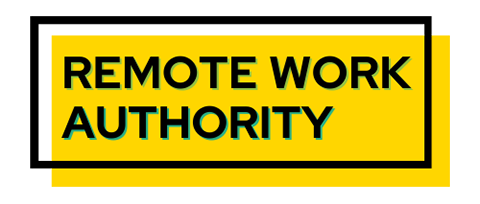The pandemic sparked an increased interest in digital nomadism when workers were told to work remotely. Many returned home when employers wanted them back in the office, but independent workers continue to embrace the lifestyle, leading to a digital nomad boom despite RTO mandates.
Since many companies enforce return-to-office policies to make work once again look like it did before the pandemic, you might assume that the digital nomad phase popularized during the pandemic has ended. When employers expect workers to be on site all or part of the week, working from afar obviously does not work. Surprisingly, in 2023, digital nomadism has increased over the past year.
Table of Contents
Composition Of Digital Nomad Population Has Changed
What has happened is that the number of independent nomads has increased, while those who worked as an employee from Tahiti or Rio have gone back to work. They may be returning to a hybrid work situation where they can work from another location a couple of days a week, but they must report to their corporate office for the rest of the time. The 4% loss in digital nomads with traditional employers has been offset by a 14% growth of independent workers who consider themselves self-employed, freelancers, or independent contractors.
Traditional workers still comprise the greatest mass of digital nomads, but the demographics are changing as freelancers and contractors are increasing.
| Year | Traditional Jobs | % ± Year To Year | Independent Workers | % ± Year To Year |
| 2019 | 3.2 | 4.1 | ||
| 2020 | 6.3 | +3.1 (97%) | 4.6 | +.5 (12%) |
| 2021 | 10.2 | +3.9 (62%) | 5.3 | +.7 (15%) |
| 2055 | 11.1 | +9.1 (33%) | 5.8 | +.5 (9%) |
| 2023 | 10.7 | -.4 (-4%) | 6.6 | +.8 (14%)1 |
| Grown by 334% | Grown by 160% |

How RTO Has Impacted Digital Nomads
As MBO Partners reports, digital nomads who formerly worked abroad have not lost their wanderlust.
Those who must report to the office a certain number of days a week may still travel outside the immediate area where their employer is located. However, they tend to travel closer to home rather than abroad. About 53% of nomads interviewed said they would travel exclusively within the country, while 47% would still do some international travel. Of this group, 10% expect to work outside the country.
About 1/3 of digital nomads in traditional jobs are stealth nomads. Either their employer does not know they are nomads, or their immediate boss has given them the okay without the company knowing. This can put both the company and the nomad at risk of breaking local employment and tax laws and compromising corporate IT security. RTO policies may force some nomads to blow their cover if they want to stay employed.

Why The Digital Nomad Lifestyle Retains Its Appeal
Being a digital nomad is undoubtedly a lifestyle worth considering for those who love to travel. Most countries have income levels that remote workers must prove before entering. If a nomad is working for a foreign employer and suddenly must either return to the office or quit their job, they must quickly find things they can do remotely or go home to regroup. Independent workers do not have to worry about an employer forcing them to come home.
In 2020, when widespread digital nomadism was new, 54% of workers planned on being a digital nomad. In 2023, 70% have this aspiration for the future. This figure is down a bit from 2020, when 72% claim this as your goal. Not everybody who dreams of remote work as a nomad follows through; about 7 to 9% of study respondents hit the road, while the rest remain “armchair digital nomads” who follow the movement with interest.
Of those living the digital nomad life, 27% of employees anticipate becoming independent workers within 2-3 years vs. 17% of traditional job holders. Sixty-eight percent of digital nomads who were previously contractors or small business owners see themselves becoming independent contractors or freelancers vs. only 48 of traditional job holders.

MBO Partners began doing digital nomad studies in 2019 and have seen the movement grow into a mainstream movement that attracts 11% of American workers. The lure of seeing more of the world and living in foreign cultures appeals to many potential nomads. Several factors have also contributed to the growth of the movement.
- As some companies enforce RTO policies, others support workers who want to live as digital nomads for a time.
- Countries and cities see the potential increase in tourism connected with digital nomads. To date, 58 countries have set up digital nomad visas, while others are accommodating to remote workers.
- Support services have sprung up to help digital nomads get health insurance, financial services, housing information, and ongoing employment. In addition, communities of digital nomads throughout the world make the concept less scary and more doable.
- Work technology with faster Internet, increased bandwidth, software to facilitate communication, and valuable tools for remote bosses and workers alike.
Demographics For The Current Digital Nomad Boom
In their 2023 report, MBO partners presented the following additional statistics for digital nomads.
1. Sex
73% of digital nomads surveyed were men, 43% were women, and 1% were non-binary.
Other surveys by Flexjobs claim that up to 70% are women. The samples used influence the outcomes in any research report, but other data points to more opportunities for female digital nomads. They can birth and raise children without sacrificing promotions as they work more flexible schedules. In contrast to having 5.3% of female CEOs in traditional workplaces, 28% of fully remote companies have women founders, presidents, or CEOs.
2. Marital Status
Of the 54 % who are married or living with a partner, 61% have traditional jobs versus 48% who were independent workers. Over 24% travel with kids.
3. Race
22% are white, 18% African American, 11% Hispanic, 4% Asian, and 3% other. These percentages remain the same.
4. Age
Millennials represent the largest percentage of digital nomads in 2023, as they did in 2022. However, the percentages for all groups have shifted. About 48% of digital nomads in 2023 were 43 years old or less, while 42 were older.
| Age group | Year Born | 2022 | 2023 |
| Gen Z | 1995-2009 | 16% | 21% |
| Gen X | 1965-1980 | 23% | 27% |
| Millennials | 1981-1994 | 47% | 37% |
| Baby Boomers | 1946-1964 | 13% | 15% |

The lower percentage of Gen. Z digital nomads reflects their preference to be in the office during the early years of their careers. There are more mentoring opportunities, and communication is often easier in person. Many young workers who come to work with fresh college degrees often learn the practical aspects of their professions.
The irony is that the MBP Partners report found that the younger the worker, the more they value working from wherever they want. Gen Zers love to travel, so it is likely that digital nomadism among this group will continue to rise.
Millennials aged 29-42 represent the largest single group. In contrast to younger workers wanting adventure before settling down, this group has consciously decided to develop their careers abroad.
Prior to the pandemic, 27% of digital nomads were boomers who often did freelance work abroad. Health concerns during COVID brought them home, but now the numbers are rising again.
5. Wages
Some digital nomads struggle to meet the monthly requirements various countries impose on them, but others are quite prosperous. Some make between $10 and $30 a year. Those making small hourly wages can have a satisfying life in a country with a low cost of living. Those making $30 an hour exceed the average American salary of $60,575. The average nomad can even save $4,000 a year or more.
Statistics show that 20% make between $50,000 and $99,999 annually. Some freelancers and business owners earn six-figure salaries.
The MBO Partners study and others confirm that digital nomads are generally satisfied with their wages, work, and lifestyle. With some remote work and plenty of opportunities for hybrid work, they predict that the movement will continue to grow, especially among independent workers.


